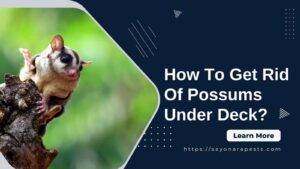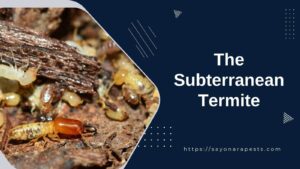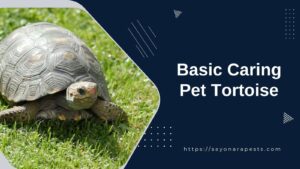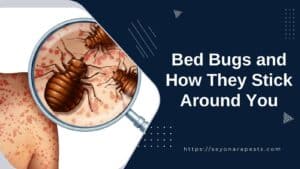The Russian tortoise is a fascinating animal that has caught the attention of both reptile experts and people who just like to watch animals.
This small tortoise species from the deserts of Central Asia is special in the field of herpetology because it looks and acts in a way that no other species does.
But caring for Russian tortoises can be complicated, and you need to know a lot about their needs and preferences to figure out how to do it.
To keep them healthy and alive for as long as possible, Russian tortoises need to be cared for properly.
These reptiles need careful care of their habitat, food, and environment as a whole. From the temperature and humidity to the substrates and hiding places, everything in their habitat must be carefully chosen to mimic their natural habitat.
If you don’t pay attention to these important details, it could hurt the tortoises and even cause them to die too soon or have health problems.
The goal of this detailed guide is to explain the complicated art of caring for Russian tortoises and give people who want to keep tortoises a lot of useful information and tips.
By going into the finer points of tortoise care, this guide aims to give people the tools they need to give their Russian tortoises the best environment possible.
This guide is helpful for both new and experienced tortoise owners who want to improve the quality of life for their scaly friends. It stresses the importance of research, paying attention to details, and being proactive with care.
As we go through this, readers will go on a journey through the fascinating world of Russian tortoises. Each paragraph will reveal a new layer of information, such as what they eat, how they reproduce, and why it’s important to make their environment more interesting.
This guide is full of tips, stories, and scientific information. Its goal is to keep readers interested and encourage them to learn as much as they can about these unique animals.
So, fasten your seatbelts and get ready for an amazing adventure as we explore the fascinating world of Russian tortoises.
Species Description of Russian Tortoises
Physical characteristics of Russian tortoises
Russian tortoises are interesting animals that are known for their unique looks, interesting habitat preferences, and interesting ways of acting.
When it comes to their bodies, Russian tortoises have a strange mix of features that even the most experienced herpetologists find hard to explain.
For example, their shells have a mesmerizing mix of colors, from earthy browns to bright yellows, making a mysterious kaleidoscope of colors.
Also, the intricate patterns and curves of their limbs make for a fascinating show that leaves onlookers baffled and in awe of the tortoises’ beautiful design.
Habitat and distribution
When it comes to where they live and how they move around, Russian tortoises are hard to understand. These hardy creatures have an amazing ability to adapt to different environments, so they can be found in many different places.
From the dry landscapes of Central Asia to the rocky landscapes of Afghanistan and Iran, Russian tortoises have been able to live there despite the odds.
Their existence is even more mysterious because they are spread out like puzzle pieces across this huge area.
Behavior and social tendencies
Russian tortoises are even more mysterious because of how they act and how they interact with each other. Their behavior is made up of short bursts of activity and long stretches of doing nothing.
It’s as if they have an innate sense of timing that baffles people who watch them. One minute, they might be taking part in a powerful ritual with their heads held high, and the next, they might pull back into themselves, going deeper into their shells.
Their social habits are also a strange mix of solitary and social behaviors. They go back and forth between wanting to be with others and wanting to be alone, which gives their relationships a mysterious feel.
In the end, the Russian tortoise is a species that both puzzles and amazes because of its strange appearance, hard-to-find habitat and distribution patterns, and mysterious behavior and social habits.
Their shells, limbs, and colors make up a complicated puzzle that always leaves people amazed. Their ability to change and the fact that they live in many different kinds of places make them even more mysterious.
Their unpredictable bursts of activity and changing social habits add to the mystery of these fascinating reptiles. The Russian tortoise is a great example of how mysterious the natural world is. It makes us want to learn more about the mysteries that surround us.
Feeding and Nutrition
Dietary Requirements of Russian Tortoises
Feeding and nutrition are very important to the health of Russian tortoises, which are beautiful animals with special dietary needs that must be met for them to be at their best.
To fully understand how hard it is to feed these mysterious reptiles, you have to dive into the complicated world of their dietary needs, which is a delicate dance between variety and balance.
Even though it might be easier to take a simple approach, Russian tortoises need a wide range of foods, each of which gives them different nutrients and tastes.
But finding the right balance can be hard because these creatures can’t get enough of new things and are always looking for new flavors to please their sensitive taste buds.
There are a lot of safe and healthy foods for Russian tortoises, but you have to be careful to make sure they get a balanced diet. When looking for food, these reptile experts have to pay close attention to every detail, because not all foods are the same in their eyes.
Tortoises need to eat foods that are not only tasty but also give them the nutrients they need to stay healthy. This requires a careful selection process.
Their diet is mostly made up of leafy greens like dandelion greens, kale, and collard greens, which give them the vitamins and minerals they need to stay healthy.
Also, high-fiber foods like hay and grass pellets help keep digestion healthy and stop dietary problems from happening.
To meet the nutritional needs of Russian tortoises, it is important to set up a recommended feeding schedule. The complicated relationship between timing and the amount of food gives keepers a hard time.
They have to find a delicate balance to make sure the tortoises get enough food without going over the line into overfeeding. Feeding the tortoises needs to be done carefully, with attention paid to how often and how much food is given.
Finding this elusive balance requires a mix of intuition and scientific knowledge, as well as the ability to adapt to the unique needs of each tortoise.
Changing the feeding schedule based on age, size, and activity level makes sure that these fascinating creatures get the food they need to grow and stay healthy. This way, their keeper can keep their well-being in mind.
In this regard, feeding and caring for Russian tortoises is a fascinating journey of learning and changing. The fact that they want variety and balance in their diets adds a layer of complexity that makes it very important to choose safe, healthy foods with care.
The recommended feeding schedule makes things even harder because you have to find a good balance between satisfying the tortoises’ hunger and keeping them from eating too much.
As keepers learn to navigate this complicated world, they learn more about feeding and nutrition, which helps them keep these amazing reptiles healthy and happy.
Water and Hydration
Russian Tortoises need water to stay hydrated and stay healthy as a whole. To stay hydrated, these reptiles need a reliable source of water that is easy to get to. It is very important to always have a shallow dish of clean, fresh water available for the tortoise.
Russian tortoises like to soak in water to drink and get moisture through their cloaca, which is an opening on their tail that looks like a vent. How often the water is changed depends on things like the tortoise’s size, the temperature, and the level of humidity.
To avoid health problems, it is important to keep an eye on the water quality and make sure it stays clean.
In addition to having a special place to get water, Russian Tortoises also get water from the food they eat. The majority of what these herbivorous reptiles eat are leafy greens, vegetables, and some fruits.
These foods are naturally moist, which helps them stay hydrated. To make sure the tortoise stays hydrated and gets enough food, it is important to give it a balanced and varied diet.
Every day, there should be fresh fruit and vegetables that haven’t been treated with pesticides. Any food that isn’t eaten should be taken away right away to stop it from going bad and letting bacteria grow.
Dehydration can be very bad for Russian Tortoises, so it’s important to know the signs and take action right away. Tortoises often show signs of dehydration like sunken or dry eyes, lack of energy, loss of appetite, wrinkled skin, and less urination.
To keep the tortoise from getting dehydrated, owners should make sure it always has access to clean water. It’s important to check the water level often and add more as needed. Also, keeping the tortoise in a humid place and giving it regular baths or soaks can help it stay hydrated.
It is also important to keep an eye on the tortoise’s diet and make sure it has a variety of foods that are high in water. Owners should talk to a vet who works with reptiles to find out how much water their Russian Tortoise needs and what else they need to do to keep it healthy.
In general, water and staying hydrated are very important parts of taking care of Russian Tortoises.
These reptiles need a steady source of water and should always have access to clean water. In addition to drinking water, Russian Tortoises get water from their food, which is mostly vegetables and leafy greens.
It’s important to know the signs of dehydration, like dry eyes and being lethargic, and to take preventative steps to make sure the tortoise stays healthy.
Owners can help make sure their Russian Tortoises stay healthy and well-hydrated by giving them a good water source, a balanced diet, and a humid environment.
Health and Wellness
Common health issues in Russian Tortoises
People who like to keep reptiles as pets like Russian tortoises because they are small and hardy.
But, just like any other living thing, these cute reptiles can have health problems that need their owners’ careful attention and proactive care.
By learning about the most common health problems that Russian tortoises face, we can make sure they are healthy and act quickly when needed.
Respiratory infections
Russian tortoises often get respiratory infections, which can have a big effect on their overall health. Most of the time, these infections happen because their environment isn’t good enough, like if the temperature and humidity levels in their cage aren’t right.
Tortoises can get lung diseases like pneumonia and rhinitis if they live in places that are always cold or damp. Respiratory infections can cause trouble breathing, wheezing, a runny nose, and tiredness.
To diagnose and treat these infections, the tortoise needs to see a vet as soon as possible. Usually, antibiotics and changes to the tortoise’s environment help it get better.
Parasites and infections
Russian tortoises can get parasites and infections, especially if they live in dirty places or come into contact with animals that already have them. Worms in the intestines are an example of an internal parasite that can make it hard to digest food.
This can cause diarrhea, weight loss, and a loss of appetite. Mites and ticks, which are external parasites, can irritate the tortoise’s skin and shell, which can cause pain and even infections.
For preventing and treating parasite infestations, it’s important to get regular veterinary checkups, check feces regularly, and keep things clean. In some cases, the tortoise may need medicine to get rid of the parasites and get its health back to normal.
Shell injuries and deformities
The shell is an important part of a tortoise’s body because it protects and holds it together. But Russian tortoises can get injuries and deformities to their shells.
These can be caused by accidents, bad care, or problems with their diet and environment. Any kind of damage to a tortoise’s shell, from small cracks to more serious breaks, can leave it open to infection and other problems.
Also, not getting enough calcium and vitamin D3 can cause shell deformities like “pyramiding,” where the shell grows in an abnormal way and forms bumps that look like pyramids.
Proper care for Russian tortoises, like giving them a well-balanced diet, letting them get enough UV light, and handling them in a safe way, is very important for keeping their shells from getting damaged or deformed.
Therefore, Russian tortoises need to be carefully thought about and proactive steps need to be taken to prevent and treat common health problems.
Some of the main things that bother these reptiles are respiratory infections, parasites, and infections, as well as shell injuries and deformities.
By giving their beloved Russian tortoises a good place to live, regular veterinary care, and a well-balanced diet, owners can help them stay healthy and live longer.
To make sure these fascinating creatures stay healthy, it’s important to stay alert and get help from professionals when needed.
Signs of a healthy Russian Tortoise
Physical appearance and activity levels
When figuring out if a Russian tortoise is healthy, it is important to look at how it looks and how active it is. A healthy tortoise will have certain traits that show they are doing well.
First, their shells should be smooth and free of cracks or other obvious flaws. The color of the shell may change depending on the subspecies, but in general, it should be bright and free of spots or spots with different colors.
Also, the skin on their arms, legs, and head shouldn’t have any sores, wounds, or other signs of infection.
A healthy Russian tortoise will also act like it’s doing something. They should have a good range of motion and be able to walk and look around without any trouble.
It’s important to keep an eye on how active they are during the day. They may rest or soak up the sun for a while, but they should also move around and explore on a regular basis.
Lack of activity or excessive sleepiness could be signs of a health problem that needs to be looked into.
Eating and elimination habits
The way a Russian tortoise eats and goes to the bathroom are also important signs of its overall health. A healthy tortoise will have a strong appetite and be interested in eating many different things.
They should eat a lot of leafy greens, vegetables, and fruits every now and then. It’s important to keep an eye on what they eat and make sure they have a balanced diet.
Any sudden changes in how they eat, like losing their appetite or not wanting to eat certain foods, could be a sign that something is wrong with their health.
When it comes to getting rid of waste, a healthy Russian tortoise will have droppings that are regular and well-shaped. Their poop should be solid, well-shaped, and the same color all the way through.
Any big changes in the way their poop looks, like diarrhea or the presence of mucus, could be a sign of digestive problems or a deeper health issue.
The health of a Russian tortoise depends on keeping a close eye on what it eats and how it goes to the bathroom.
Any changes or deviations from their normal patterns should be dealt with quickly so that they can be found early and, if needed, treated properly.
In the end, a Russian tortoise’s health can be judged by how it looks, how active it is, what it eats, and how it goes to the bathroom.
A tortoise in good health will have a smooth shell, bright colors, and smooth skin. They should be active and move around and look around at regular intervals.
They should have a strong appetite and eat a variety of foods. Also, they should go to the bathroom regularly and make droppings that are well-shaped.
By keeping an eye on these signs of health, tortoise owners can catch any problems early and make sure their beloved reptile friends are healthy.
Regular check-ups and veterinary care of Russian Tortoises
Russian tortoises need regular checkups and veterinary care to stay in good health. These cute reptiles are from Central Asia and have certain needs that must be met for their overall health.
It is important to find a qualified reptile vet to make sure that these unique animals get the special care they need.
Finding a qualified reptile veterinarian
When looking for a vet to take care of a Russian Tortoise, it’s important to find someone who knows how to treat reptiles. Reptile medicine is a specialized field, and not all vets have the skills they need to work with these interesting animals.
So, it’s best to find a veterinarian who has extra training or a special interest in caring for exotic animals.
People like this are more likely to know a lot about the specific health problems that can happen with Russian Tortoises.
To find a good vet for reptiles, a good place to start is with local reptile clubs or societies. These groups often keep lists of recommended vets who are experts in taking care of reptiles.
Also, online forums and communities for people who love reptiles can be great places to get advice from other people who have Russian Tortoises.
It’s important to get multiple recommendations and do a lot of research to make sure the vet you choose has the knowledge and experience to deal with the unique health needs of reptiles.
Preventative care and routine exams
Russian Tortoises need regular exams and preventive care to stay healthy and happy. Even though they are usually strong animals, they can still have health problems that can be better dealt with or even prevented with the right veterinary care.
During regular checkups, a vet who works with reptiles will look at the Russian Tortoise’s health as a whole. They will look at the tortoise’s shell, skin, eyes, and limbs to see if there are any signs of injury, infection, or something that doesn’t seem right.
They will also keep an eye on the tortoise’s weight and general health to make sure it is in a healthy range.
Routine exams also give the vet a chance to check the tortoise’s mouth and breathing system to make sure there are no underlying problems in these very important areas.
To protect the Russian Tortoise’s health, it is also important to do things like check for parasites and vaccinate them regularly. If you don’t get rid of parasites like intestinal worms or mites, they can cause major health problems.
So, veterinarians may suggest looking at a pet’s poop on a regular basis to check for parasites and give the right treatment when needed. As a preventive measure, vaccinations against diseases that can affect reptiles may also be suggested.
Overall, Russian Tortoises need to have regular checkups and veterinary care as a top priority to stay healthy and happy. It is very important to find a qualified reptile vet with the right skills and experience.
With regular checkups and preventive care like checking for parasites and getting shots, these beautiful reptiles can live long, healthy lives.
Russian Tortoises can do well in captivity as long as their owners are responsible and they get regular veterinary care. Their unique beauty and charm will continue to attract people who like reptiles.
Reproduction and Breeding of Russian Tortoises
Mating behaviors and reproduction process
Russian tortoises have interesting ways of mating and a complicated way of having babies. The males of these reptiles do a ritualized dance to show who is the boss.
They do this by bobbing their heads, bumping into each other, and sometimes biting. This show of strength is meant to attract a woman who is interested.
Once a female has been enticed, she may let the male mount her by raising her back shell.
The actual mating process of Russian tortoises is a great example of how well they can work together and move with great precision.
The male climbs onto the back of the female and holds on with his back legs. He gets his sperm into the female’s cloaca by moving his pelvis in a rhythmic way.
This process, called “internal fertilization,” makes sure that the sperm needed for reproduction gets to the female.
Incubation and hatching
After mating successfully, the female Russian tortoise sets out to lay her eggs. People have heard that these tortoises lay anywhere from two to ten eggs at a time.
The female carefully chooses a good place to build the nest, which is usually a sandy area that gets enough sun and heat. She then digs a hole where she can lay her eggs and carefully covers them with dirt to keep them safe from predators and changes in temperature.
Depending on the environment, it usually takes between 70 and 90 days for Russian tortoise eggs to hatch. The temperature at which the eggs are incubated tells what the hatchlings will look like when they come out.
When temperatures are high, more females are born, while when temperatures are low, mostly males are born. This is called “temperature-dependent sex determination,” and it makes the process of Russian tortoises having babies even more complicated.
Care of hatchlings and young tortoises
When Russian tortoise babies hatch, they often come out of their eggshells at the same time, showing an instinctive drive to live. They are tiny versions of their adult selves.
Their shells are perfectly formed, and they are very eager to explore their surroundings. But these young tortoises are very weak and need special care to make sure they stay healthy.
When caring for hatchlings and young Russian tortoises, the most important thing is to give them a place that is like their natural habitat.
This means giving them a big, comfortable home with the right temperature and humidity, as well as a varied diet of leafy greens, vegetables, and sometimes fruits.
Also, they need to be able to drink and soak in clean water, because staying hydrated is important for their growth and development.
The hatchlings also need to be handled properly and checked on often to make sure they are healthy.
Regular checkups with a vet who works with reptiles can help find any health problems and get them the right treatment or care. As the young tortoises get bigger, they will slowly start eating more like adult Russian tortoises.
The way Russian tortoises reproduce and have babies is a fascinating thing to know. From their complicated mating habits and internal fertilization to the fact that their sex is determined by temperature while they are incubating, every part of their reproductive cycle is fascinating.
Also, caring for hatchlings and young tortoises takes a lot of time and effort to give them the best conditions for growth and survival. Anyone who wants to raise these interesting animals needs to understand and appreciate these complexities.
In a broader sense, the Russian tortoise is a fascinating species that need special care and attention to do well.
In this guide, we’ve talked about many different parts of their lives, from how they look and where they live to what they eat and what worries them about their health.
It is important to give these tortoises a varied and balanced diet so they get all the nutrients they need to stay healthy. Getting enough water is also important for their health, and both water sources and foods that keep them hydrated play a role.
As a responsible owner, you need to know the signs of a healthy tortoise and be aware of common health problems.
Regular checkups with a qualified reptile vet are recommended to make sure that preventive care is given and that any problems are treated quickly. By doing these things, tortoise owners can make sure that their pets have the best life possible.
We’ve also talked about the interesting topic of how Russian tortoises reproduce and raise their young. From the way they mate to how they take care of their young, this part of their lives makes them even more interesting.
In conclusion, the Russian tortoise needs a lot of care and attention to do well in a home. Tortoise owners can make sure their pets are healthy and live a long time by giving them a good place to live, a balanced diet, and good medical care.
The information in this guide will help you take care of your Russian tortoise in a responsible way and give you a full picture of what it needs.
As you learn how to take care of these unique reptiles, remember to keep learning and ask for help from experts in the field. If you take good care of your Russian tortoise, it can bring you happiness and company for many years.











